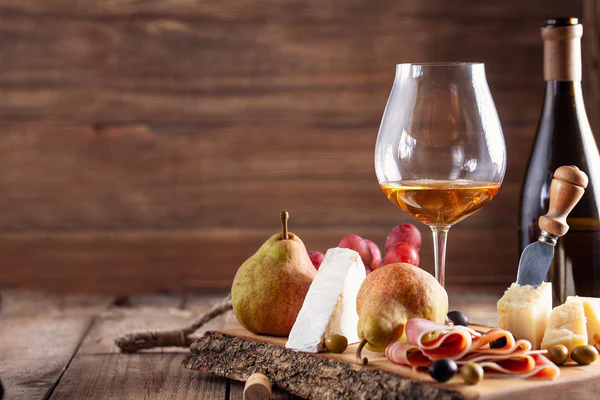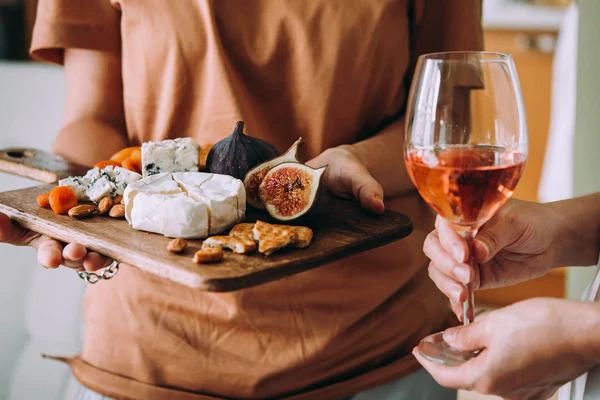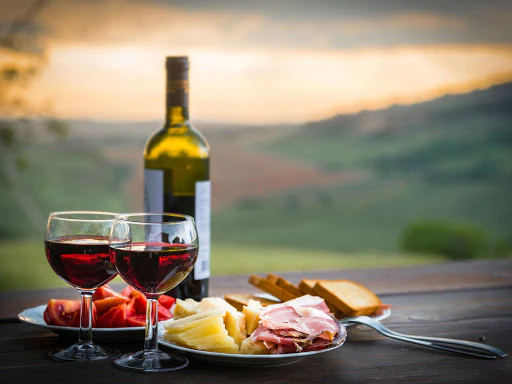“True satisfaction can only be given by harmony”, it is very difficult to disagree with this statement. Wine and cuisine have been closely related to each other for centuries. Many people use wine in cooking, but the maximum number of people use wine in combination with gastronomic delights.
Of course, there are no clear and unequivocal correspondences, there are only recommendations, and personal tastes are the decisive factor here. You can often come across the opinion that white wines are recommended to be consumed with white meat, and red wines are recommended with red meat. Now you need to pay attention not only to the main dish, but also to the accompanying components, because depending on the cooking method, different wines can be served.

Many French gourmets offer new combinations in combinations, but still, before proceeding to free improvisations, it is important to master the basic principles of compatibility.
“Enemies of wines”
There are various dishes and some individual components that dull the sensitivity of the tongue’s receptors and deprive them of the ability to distinguish shades of taste.
Citrus fruits (lemons, oranges, grapefruit, etc.), various vinegars and mayonnaises, spices (vanilla, cinnamon, curry, saffron, etc.), herbs (mint) shock the receptors.
Coffee, chocolate (excluding certain types of sweet and fortified wines), chocolate candies lead to the fact that tasted wines seem watery, empty, faceless. It is worth avoiding: fatty, smoked and salted fish, as well as salted tomatoes and cucumbers, sauerkraut – all this adds a metallic taste to wines.
Undoubtedly, all the listed components do not necessarily have to be categorically avoided. For example, if citrus fruits were used in the preparation of the dish and they underwent heat treatment, then wine can be served.
Kinship of souls
As a rule, the products of the same land (one region) are strongly related to each other, they are good in combinations, perfectly complement and emphasize each other’s merits. Culinary traditions are formed over centuries, and this time is quite enough to determine the best combinations of wines and dishes.
Color card
In many cases, the color of the served dishes suggests which wine to take. White wine goes with white meat, and red wine goes with red meat. It is also worth paying attention to how the main dish is prepared and what accompanying components were used.
To the table
Wines are often used in cooking when preparing various dishes. If the wine was involved in the cooking, it can be served to the table, or wine of a similar type. If the wine is rare and there is very little of it, you can safely use cheaper wines from the same region (locality) or from a similar grape variety when preparing dishes. If we use low-quality wine in cooking, the resulting dishes will be spoiled or will not be able to provide integrity as a result.

Harmony
Saturated wines with a high alcohol content require rich dishes with thick sauces, in turn, light and simple wines should be served with light dishes. Wines with complex aromas should be served with dishes with a simpler taste and vice versa. If the dish is very concentrated, strong, and the wine is light, then its aroma and taste will not be able to fully manifest themselves. If you do not follow this rule, there will be more competition than harmony in the combination.
Price
When choosing wines and dishes, many people are guided by the price. It should not be taken literally in the sense that the more expensive the wine, the more expensive the dish should be. Wines of special years are in many cases self-sufficient, it is very difficult to find a gastronomic passion for them, they are mostly better tasted without any food. In many cases, sommeliers recommend not exceptional, but simply good years for fine dishes.
Good coincidence
Sometimes you drink your favorite wine with your favorite dish, and often this combination turns out to be successful. One of the most inexplicable superstitions about wine was, and still is, the traditional obsession with serving only the “right” wine with each particular dish.
Travels in wine regions show how wrong these rules are. For example, in Portugal, fishermen wash down sardines and salt cod with red wine. And in Burgundy, they cook fish in red wine and serve red wine.
The general rules of combination apply to food. For example, the fat content of goat cheese or brie can give red Burgundy wine a metallic aftertaste, and dry white wine is much more suitable in this case – its acidity will break through the fat. The proteins contained in the meat make all wines, except the most fruity ones, harder to taste.

Burgundy goes well with veal, and Bordeaux wine goes well with lamb. Astringent red wine dries out receptors and increases the sharpness of spices.
The ideal wine for any spicy dish can be a slightly sweet white or a light juicy red. Buying a wine that goes well with any meal is often a wise decision.
In general, wines that are good to drink without a snack or with snacks should be light, inexpensive and simple.
For events where food is not provided, do not buy too dense, dense wines, as well as wines with high acidity and tannin content. In summer, choose refreshing wines with good acidity (white wines from cool climates and with low alcohol content). Light, fruity red wines that can be slightly chilled are also good. Beaujolais, ordinary “Merlot” and “Pinot Noir” are good. In winter, choose medium-bodied wines with bright fruit tones, white “Pinot Blanc”, “Chardonnay”, white wines of the Southern Rhône or red Chilean “Merlot”, Argentine “Malbec” ….
Each wine and dish should be considered separately, but we still offer a small sketch or an example of appropriate pairings.
